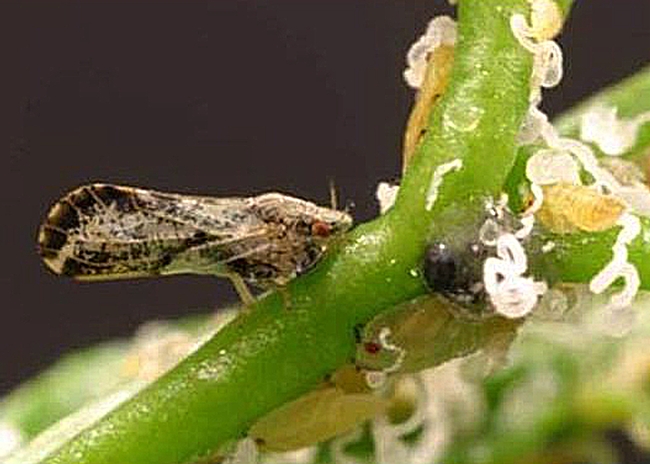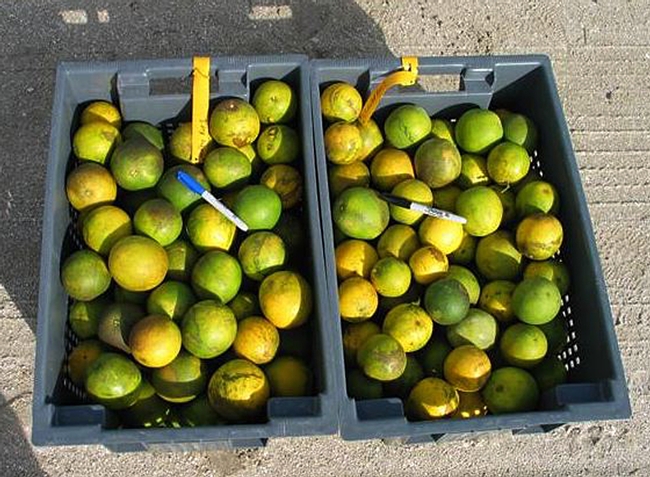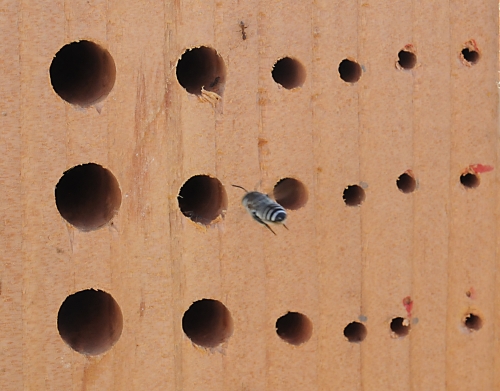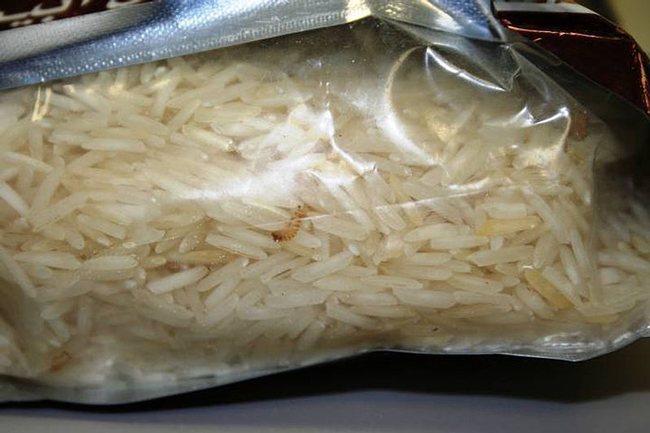The public, says entomologist Kris Godfrey, needs to become more aware of the threat of invasive species.And, she adds, we need to educate people and...

Asian citrus psyllid is an invasive pest. (Photo by M. E. Rogers, University of Florida)
Asian citrus psyllid is an invasive pest. (Photo by M. E. Rogers, University of Florida)

Bin at right shows Huanglongbing (HLB) symptoms caused by Asian citrus psyllid. At left: normal fruit. (Photo by S. E. Halbert, Florida Department of Agriculture and Consumer Services)
Bin at right shows Huanglongbing (HLB) symptoms caused by Asian citrus psyllid. At left: normal fruit. (Photo by S. E. Halbert, Florida Department of Agriculture and Consumer Services)
Posted on
Friday, February 24, 2012 at
7:50 PM
The article noted that officials discovered five live Khapra beetle larvae at LAX in October. (Photo: Khapra larvae in a bag of rice. Wikimedia Commons.)
California Senator Anthony Canella (R-Ceres) highlighted the high cost of invasive pests in California at an informal hearing Dec. 14 in Los Angeles, reported the
Merced Sun-Star.
“Experts peg the negative economic impact caused by invasive pests at $3 billion every year, making pest prevention a concern for all California communities – not just those in rural areas,” Sen. Cannella said. “Today’s hearing offered an important opportunity to better understand the harm invasive pests pose to urban landscaping, waterways and public health and to discuss the role urban communities play in pest prevention and control.”
The list of experts who testified at the meeting included:
Beth Grafton-Cardwell, director of the UC Lindcove Research and Extension Center and the leader of the ANR Endemic and Invasive Pests and Diseases Strategic Initiative
John Kabashima, UC Cooperative Extension Orange County environmental horticulture advisor and director
Posted on
Thursday, December 15, 2011 at
9:41 AM
I ran into two members of the U.S. Customs and Border Protection Patrol this afternoon.
No, I wasn't at a border. I was merely walking the...

Mediterranean Fruit Fly
MEDFLY--Border patrol agents suspect that travelers to Hawaii may be bringing back mangoes infested with the larvae of a Mediterranean fruit fly. The Medfly can infest more than 260 types of fruits and vegetables, causing severe impacts on California agricultural exports and backyard gardens, according to the California Department of Food and Agriculture (CDFA). The CDFA announced Dec. 2 that it has established a 107 square-mile quarantine zone in the El Cajon area of San Diego County, following the detection of a Medfly infestation.
Posted on
Monday, December 1, 2008 at
5:52 PM
If you're interested in insects--the good, the bad and the ugly--don't miss the Northern California Entomology Society meeting on Thursday, Nov. 6 in...

The Good
THE GOOD--A leafcutter bee heads toward a bee block or "bee condo" erected by a Yolo County farmer to attract native pollinators. UC Berkeley professor Gordon Frankie is scheduled to discuss "Native California Bees Looking for Cheap Urban Real Estate” at the Northern California Entomology Society meeting on Nov. 6 in Concord. (Photo by Kathy Keatley Garvey)

The Bad
THE BAD--This is the light brown apple moth, a male. The CDFA's William Roltsch will discuss "Biocontrol of Light Brown Apple Moth, a Quarantine Pest in California” at the Northern California Entomology Society meeting on Nov. 6 in Concord. (Photo courtesy of David Williams, principal scientist, Perennial Horticulture, Department of Primary Industries, Victoria, Australia.)

The Ugly
THE UGLY--The invasive Asian citrus psyllid will be discussed by the CDFA's Kris Godfrey at the Northern California Entomology Society meeting on Nov. 6 in Concord. Description from the CDFA site: "The head is light brown. The wings are broadest in the apical half, mottled and with a dark brown band extending around the periphery of the outer half of the wing. The insect is covered with a whitish waxy secretion, making it appear dusty." (Illustration courtesy of CDFA)
Posted on
Thursday, October 23, 2008 at
3:29 PM







